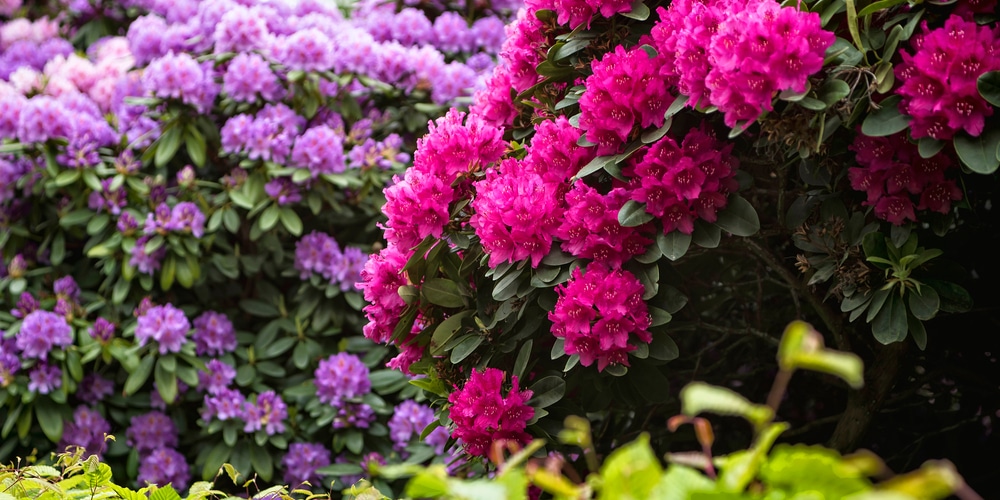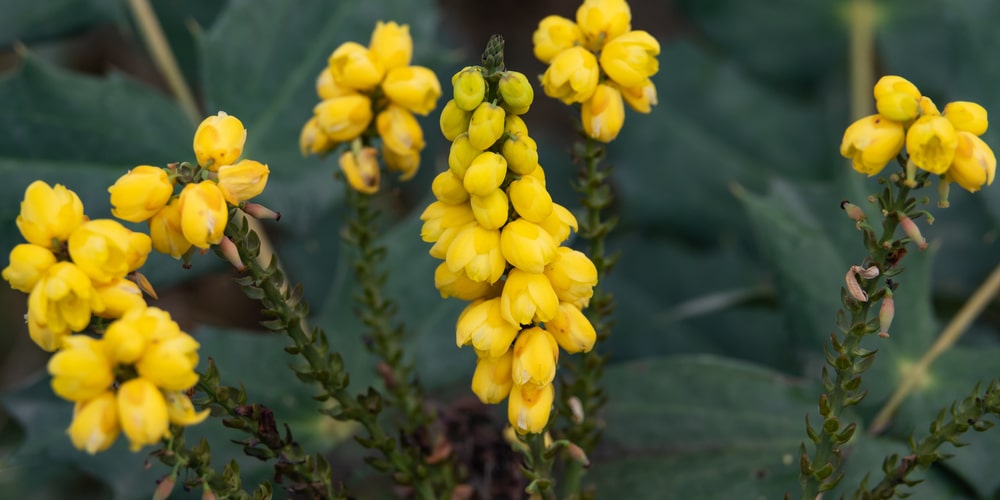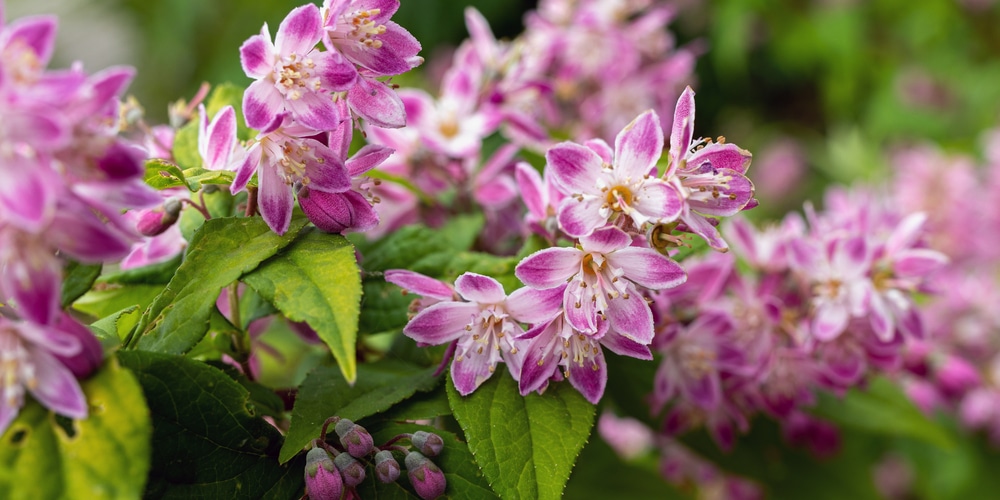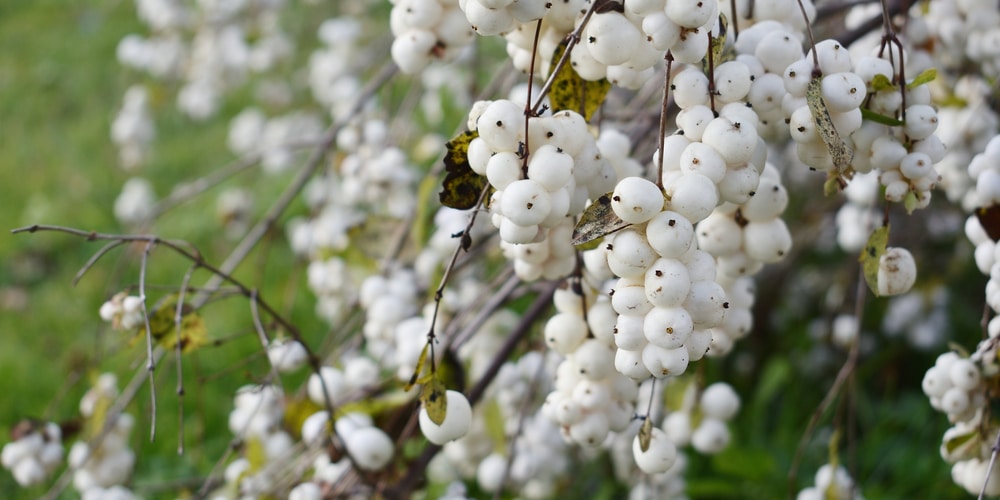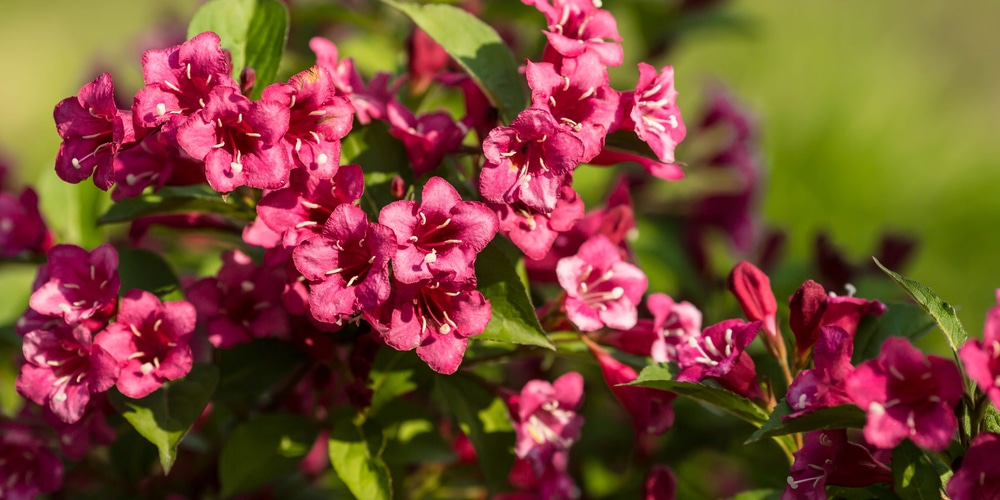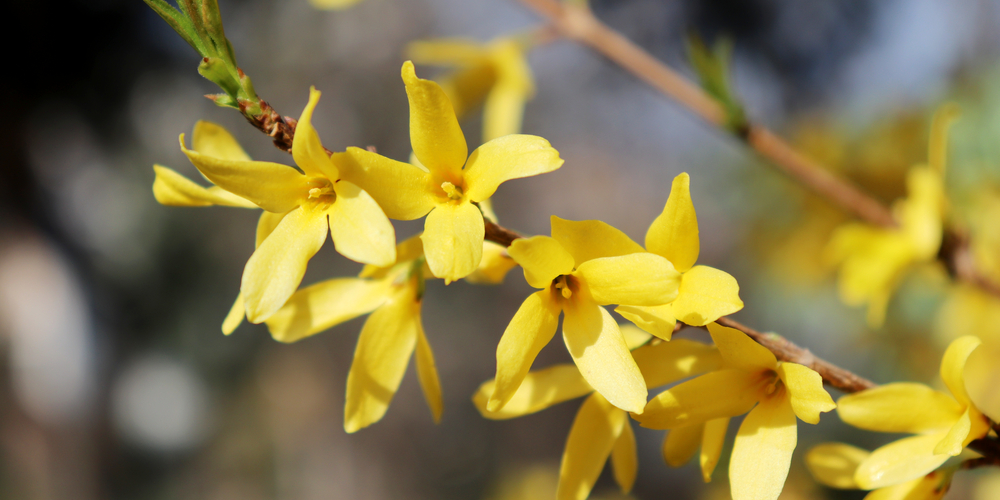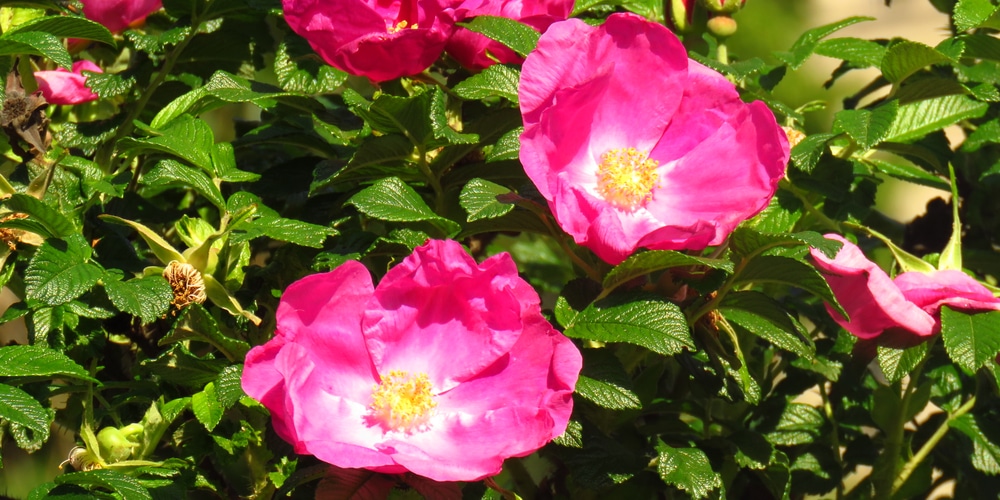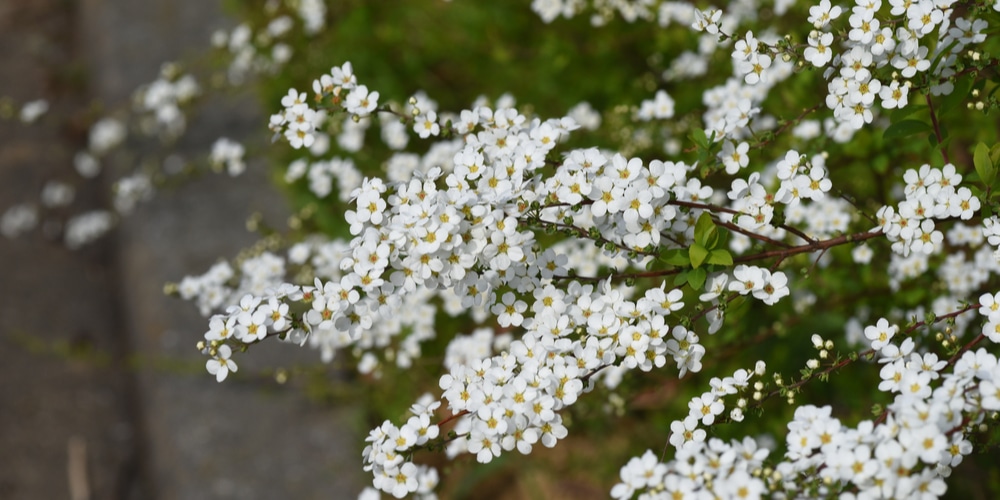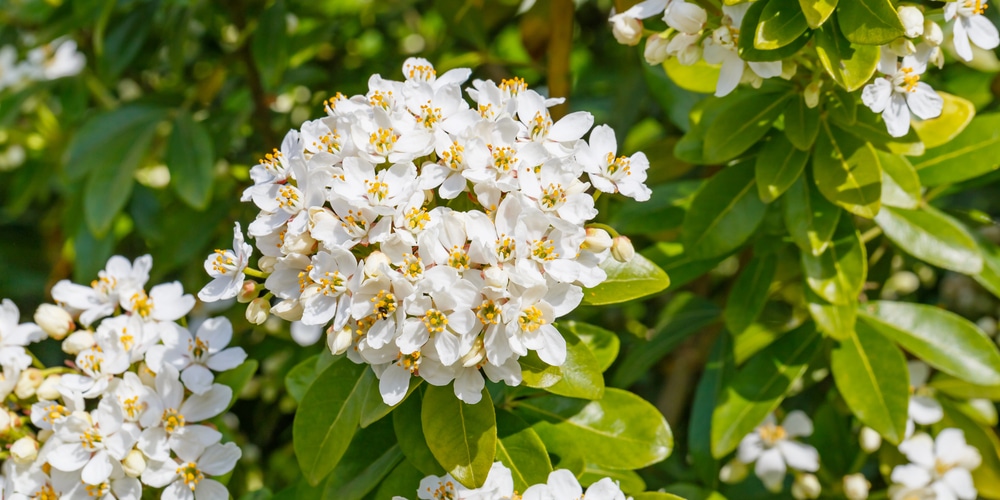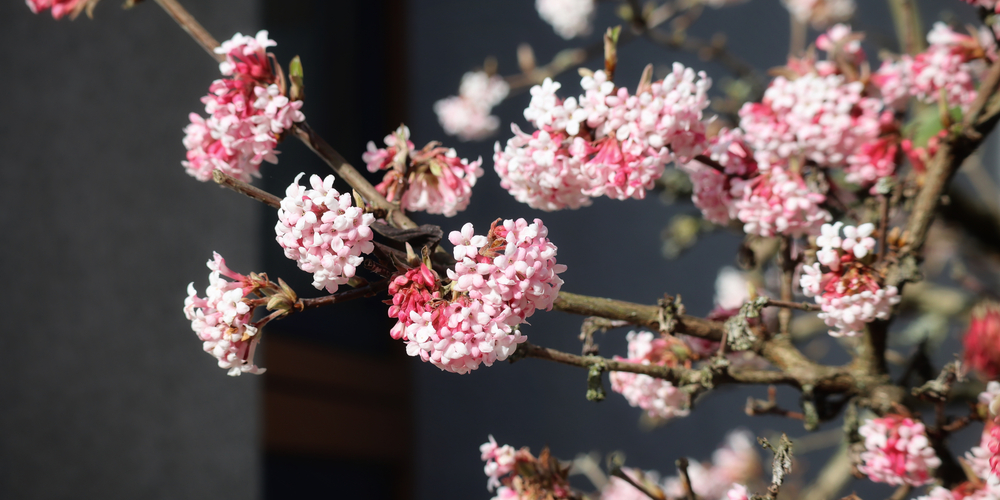Having predominantly clay soil in your yard or garden shouldn’t deter you from growing a bright and cheery landscape. Here are 11 shrubs and bushes that like wet clay soil.
Shrubs That Like Wet Clay Soil
Hydrangea
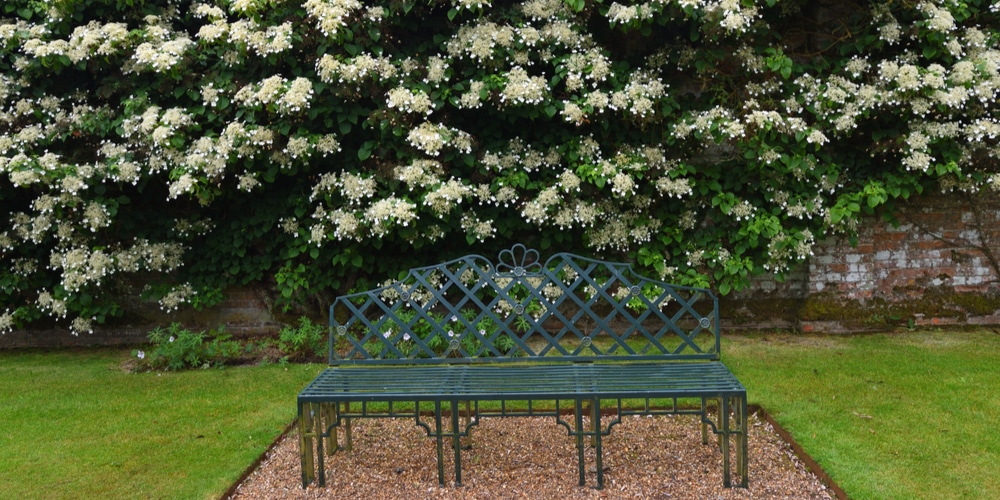
Regardless of species, all hydrangeas can thrive in a mostly-clay environment. You can choose among 5 feet varieties or go for the taller ones that can reach up to 20 feet in height.
It’s recommended that you try the most common yet beautiful Bigleaf hydrangeas, with bloom colors ranging from the usual blue and pink to white and even lime green. Or, you can surprise visitors with leaf-changing Oakleaf hydrangeas that turn when fall comes around.
Hydrangeas love partial sun and shade, as well as medium watering and lots of nutrients.
Rhododendron
You may know rhododendrons by their more common name, azalea. This species is divided into two categories- evergreen and deciduous. They can grow up to 20 feet and bring out the flowers come fall or spring, depending on the species you choose.
Rhododendrons are versatile in their own right, and this makes them favorite mainstays in any landscape. The plant likes to stay on the dry side and appreciates being kept out of direct afternoon sun. Like the hydrangea, azaleas can thrive in constantly wet soil.
Mahonia
If you like bushes that stay green all year long then the Mahonia should be on top of your list. It grows well in zones 5 to 9 and should be planted where there’s partial shade.
Foliage-wise, the plant is a robust grower and can reach a maximum 8 feet in height when properly cared for. The toothed leaves tend to change color from dark green to burgundy depending on the season. Come springtime, chick-yellow clusters of blooms burst forth and remind everyone that the cold has passed.
Deutzia
One of the easiest to grow shrubs in the list, Deutzia can grow in virtually any lighting and soil condition, even wet clay.
You can put it where there’s a lack of green in the landscape and it will perform beautifully. Alternatively, you can use it in borders and as natural ornaments, with cascading branches giving way to bell-shaped pink or white flowers in spring.
Deutzia has bright green leaves that fall off to reveal reddish-orange bark. The plant can tolerate full sun but you should make sure to water on hot days.
Snowberry
Snowberry is a curious name for an equally curious bush. In some circles it’s known as white coralberry, ice apple or waxberry.
Snowberries are tough and can live in hillsides, waterfronts and areas that get constantly buffeted by winds. The branches and stems are rigid enough and are lined with oblong leaves.
The main attraction isn’t the foliage, but the pink flowers that grow anywhere along the stem. When early summer comes, the blooms turn into white berries that resemble snowballs (hence the name) and attract various wildlife in your area.
Weigela
Weigelas add a pop of color to any landscape and are an excellent choice for yards with dominant clay soil.
It’s worth noting that this shrub is beginner-friendly and won’t mind the occasional neglect. Dwarf varieties can be put in containers, while others can use the regular variant to decorate their borders. Come spring time, tubular blooms of red, pink or white mingle with foliage hues that range from purple, green and even variegated characteristics.
Forsythia
Forsythia is a moisture-loving shrub of the deciduous variety. It loves regular watering and actually enjoys sitting in wet clay soil.
Depending on where you live, you’ll want to position your plant to receive bright morning sun and partial shade during the afternoon. The branches are nothing to write home about until they start producing golden yellow flowers come early spring. It’s worth noting that gardeners should prune forsythia regularly to keep it prim and proper.
Rugosa Roses
A voracious grower, Rugosa puts out flowers like a champ when the sun is out during summertime. It’s also one of those plants that can thrive by itself, and it’s fairly resistant to pests, disease and coastal conditions too.
You’ll want to position your Rugosa where it gets full sun throughout the day. To keep it from drying out it’s recommended that you use clay soil with organic materials and fertilizer as an amendment.
Over time, you’ll start seeing (and smelling) fragrant flowers in shades of red, pink or white. To encourage continuous blooms it’s recommended that you deadhead, or remove spent flowers.
Spirea
Spirea can grow up to 8 feet tall depending on the variety you choose and grow with very little care.
Any spot that gets full sun is ideal for spirea. Its overarching nature makes it excellent when used as a border shrub or focal point. Once established, you can just wait for the white flowers in spring, or red, pink or white blooms during summer. When fall comes the leaves turn from blue green to yellow orange.
Hold off on watering if it’s in clay soil since the bush likes to have dry roots every now and then.
Choisya
‘Mexican Orange’ gets its name due to its extremely pleasant flowers that smell like oranges. The best place for a Choisya in your yard is in a shady area, such as a fence or along a wall.
Choisya grows well in USDA zones 7 to 10 and prefers a constant watering schedule. Once you get the timing right the evergreen shrub starts producing white flowers that are shaped like stars.
Viburnum
Viburnum offers more than 100 varieties depending on how you want to use them in your landscape or garden. You can pick deciduous or evergreen, as well as species that can grow anywhere from 3 feet to a whopping 20 feet in height.
Regardless of type, you can expect pink or white bulbous flowers in the spring which slowly turn into berries. The fruit itself changes color as time passes, from red or pink to golden yellow or even blue. Furthermore, the leaves turn to maroon, burgundy or orange once fall comes.
